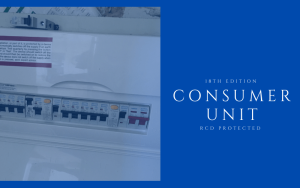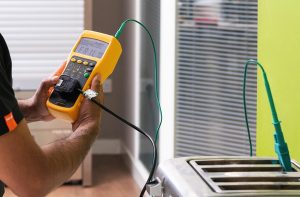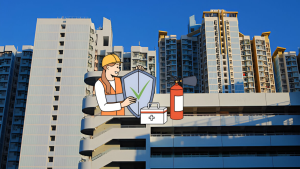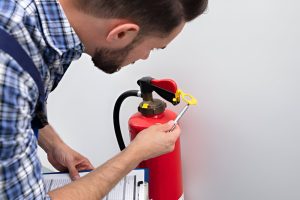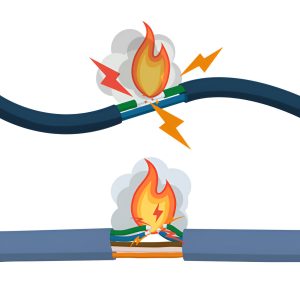As a gas safety engineer, I’m often asked what is involved in a gas safety certificate check. In this article, I’ll explain the process from start to finish so you can feel confident that your property and its inhabitants are safe.
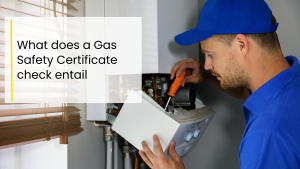
The primary purpose of these checks is to ensure any gas appliances or pipework systems at your property are operating safely and efficiently; with no risk of carbon monoxide exposure or fire hazards.
As part of this comprehensive check-up, we also look for signs of wear and tear or corrosion on pipes and valves, as well as checking flues and ventilation systems.
By taking all necessary steps to identify potential problems before they become serious issues, you can be sure that you’re doing everything possible to keep your family safe from harm.
Initial Visual Inspection
Gas safety is a serious business – one small mistake can have far reaching consequences. As such, when I conduct a gas safety certificate check, it’s essential that my initial visual inspection is thorough and accurate.
First off, I’ll take the time to inspect any appliances that are already installed in situ; ensuring all flues, chimneys and ventilation routes are clear and free from debris or obstruction.
Furthermore, for any new appliances being installed during this visit, I ensure they comply with current regulations by checking their air vents and identifying if there is an adequate supply of fresh air available for combustion.
Lastly, as part of my inspection process prior to installation, I will carry out various tests on existing gas lines to guarantee their safety. This includes testing the tightness of joints using appropriate tools and instruments to detect leaks which may be present within the system.
Once these checks have been performed successfully then we can move onto the next stage of the process: issuing a Gas Safety Certificate!
Gas Pressure Test
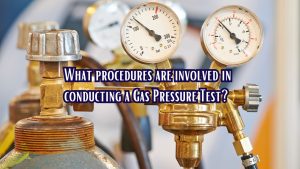
Having completed the initial visual inspection, it’s time to move on to a gas pressure test. This test is legally required for all landlords and property owners who use natural gas in their properties. It ensures that appliances are working safely and meet current gas safety regulations.
To effectively perform this test, I must first make sure that each appliance has correct flame adjustment settings as per manufacturer’s instructions.
I will then measure the gas pressure of each appliance with a specialist gauge, comparing these readings against those recommended by the manufacturer or relevant British Standard. If any readings fall outside accepted limits, adjustments must be made until they do comply- otherwise the appliance can’t be certified safe for use.
Once satisfied that all measurements meet approved standards, I’ll then check ventilation provision meets legal requirements and issue an official Gas Safety Certificate if everything checks out OK.
In other words, my job here is done!
Air Pressure Test
I use a specialised gauge to measure the pressure of the gas in the system.
This test only takes a few minutes, but it’s important to ensure that all safety precautions are taken.
I always make sure to check all the equipment before I start the test, to make sure it’s in good working order.
I also check the area for any hazards to ensure that everyone involved is safe.
During the test, I will be making sure that the pressure is within the correct range.
Finally, I double-check my results to make sure that everything is working as it should be.
Testing Equipment
As a gas safety engineer, I always begin any check with the air pressure test. This is because it’s critical to ensure that there are no gas leakage or other safety issues present in the system.
To carry out this test, I use specialised equipment such as manometers which measure pressure and allow me to compare results against established safety standards. It’s important for these tests to be carried out regularly so that I can identify potential problems before they have an adverse effect on the property and its occupants.
The accuracy of my readings also helps to provide peace of mind when it comes to keeping both people and properties safe from harm.
Duration Of Test
Once I have the readings from my manometer that comply with safety standards, I then move on to other aspects of the air pressure test.
Depending on the situation, this could involve checking for any blockages in the system or ensuring that adequate ventilation is present.
All these checks are necessary to ensure that all safety requirements and test standards are met before certification can be granted.
In most cases, a typical air pressure test takes around an hour to complete.
However, should there be any particular issues which need further investigation, it may take longer than expected as every detail needs to be double-checked for accuracy and compliance.
This extra time is well worth it as anyone who has experienced a gas incident will know how dangerous they can be if not adequately addressed.
For me, being able to guarantee both peace of mind and safety when dealing with gas systems is incredibly rewarding and why I continue to do what I do.
Safety Precautions
Safety precautions are just as important an aspect of the air pressure test as taking readings.
I always make sure that any electrical safety issues have been addressed and all gas maintenance has been carried out prior to commencing a test.
This could involve checking for blocked pipes or ensuring there is adequate ventilation in place before proceeding with the certification process.
It’s essential to ensure that all safety requirements are met and it can be incredibly rewarding when you know you’ve done your part to guarantee peace of mind too.
Checking Flues And Ventilation Systems
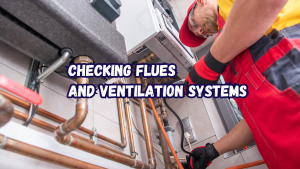
I’m sure you know that a gas safety certificate check is no joke. It requires the utmost attention to detail; we’re not just talking about checking for monsters under the bed here! When it comes to flues and ventilation systems, I have one word: thorough. Let’s get into the nitty-gritty of this crucial process.
As any seasoned gas safety engineer will tell you, inspecting flues and ventilation systems is an integral part of ensuring all appliances are safe to use in your home or workplace.
Here’s what I do when conducting a comprehensive inspection:
- Assessing Inspection Frequency
-
- Making sure appliance inspections are carried out at least once per year
- Confirming appropriate intervals between each subsequent inspection
- Updating maintenance records accordingly
- Inspection Process Overview
- Testing for proper operation by turning on/off devices such as fans or heaters
- Ensuring adequate air supply and correct location of vents
- Checking operating temperature limits and pressure levels (if applicable)
- Examining components including ducts, pipes, seals, casings etc.
- Safety Documentation & Reporting
- Recording results of tests using dedicated software tools (e.g., Gas Checker Pro)
- Generating reports with full details on findings, measurements taken, observations made etc.
- Keeping copies of safety documentation up to date and accessible upon request from relevant authorities
When it comes down to it, my job is all about protecting people from potential hazards related to gas appliances – so that they can enjoy peace of mind and keep their homes warm during those cold winter nights!
Verifying Appliance Operation
As a gas safety engineer, it is my job to evaluate the efficiency of all appliances. This includes verifying that they are operating properly and safely.
I do this by inspecting seals around the appliance, testing for any gas leaks, and checking flue performance. I also check that any ventilation requirements have been followed correctly and that other applicable regulations have been met.
It’s important to ensure proper operation so that no hazardous situation occurs in the future due to incorrect installation or maintenance of an appliance. To further help guarantee safe operation of each appliance, I make sure to test them using specialized equipment designed for detecting combustible gases like carbon monoxide and methane.
If these tests come back positive then more detailed investigations may need to be done before I can issue a gas safety certificate.
Testing For Carbon Monoxide Leaks
As a gas safety engineer, it’s important to test for carbon monoxide leaks during each inspection. Carbon monoxide is an invisible and odorless gas that can cause serious health problems if not detected in time. It’s essential to use the latest equipment to detect any potential risks caused by CO emissions from combustion appliances or fuel-burning systems.
To ensure complete combustion safety, we’ll install carbon monoxide detectors at strategic points throughout the property. These devices are able to monitor levels of CO present in the air and alert occupants immediately when unsafe concentrations occur.
We also need to make sure all existing combustible materials such as furniture, carpets, curtains and rugs aren’t too close to heat sources like fireplaces or water heaters.
It’s our job as experts in this field to ensure every aspect of your home’s gas safety system is up-to-date with current standards and regulations so you can rest assured that your family is safe against potentially dangerous gases like carbon monoxide.
With our comprehensive testing procedures, you will always be informed about any dangers posed by your household’s gas supply.
Checking For Pipe And Valve Corrosion
Piping and valves are the two primary components of any gas system, so it is essential to inspect them thoroughly during a gas safety certificate check. Perfectly prepared pipes and properly maintained valves can ensure safe operation for years to come.
A qualified gas safety engineer should always start by inspecting the installation of these components to make sure they are in line with accepted standards. This includes checking that all pipe joints are secure, not damaged or twisted, and there is no evidence of leakage around them. It’s also important to verify whether the type of gas being used matches what was specified when the units were installed.
In addition, corrosion needs to be examined carefully on both metal piping and valve fittings throughout the system. The engineer should look out for rust spots, flaking paintwork or discolouration which could indicate deterioration due to prolonged exposure to moisture or chemical contaminants in the air.
The following steps should be taken to check for pipe and valve corrosion during a gas safety certificate check:
- Inspecting pipe installation for compliance with accepted standards
- Making sure all pipe joint connections are secure
- Ensuring correct type of gas is used in accordance with specification
- Examining metal piping for signs of corrosion such as rust spots or discolouration
- Investigating valve fittings for evidence of damage from chemicals – and testing for gas leaks.
Recording Gas Meters And Appliance Details
I’ll start by taking a meter reading so I can get a good idea of the gas usage.
Then I’ll move on to checking the appliance details to make sure everything is up to standard.
I’m looking for things like the installation date, condition of the flue and whether the appliance has been serviced recently.
After that, I can make sure the certificate is properly filled out and that the customer is safe.
Meter Reading
As a gas safety engineer, it’s vital to take accurate readings of any gas meters and appliances. A good place to start is by taking note of all the information needed for your report. This includes details such as the type of meter or appliance being inspected, its location in the property, and how long it has been installed.
All this data needs to be recorded during a gas safety certificate check-up so that we can make sure everything is running safely and efficiently.
To ensure there are no potential gas leakage problems, I always begin my checks with a thorough examination of each meter or appliance. It’s essential to look out for signs like corrosion or wear and tear on pipes, connectors and joints which could lead to potentially dangerous situations if left unchecked.
Once these areas have been identified, I use specific tools designed for boiler maintenance or inspection purposes to further assess their condition before providing an official assessment.
With every step completed successfully in accordance with best practices, you can rest assured that your home is equipped with effective measures against future risks related to gas leakage prevention.
Appliance Details
Now that we’ve gone through the basics of recording gas meters and appliance details, let’s take a closer look at what goes into it.
From reviewing records to checking seals, I need to make sure that all areas are under scrutiny so that nothing is missed out. This also includes making sure any appliances installed in the property have been properly tested and certified before use.
It’s important to keep up with regular maintenance as this can ensure potential problems are avoided down the line.
To complete an accurate assessment of each meter or appliance, I always begin by looking for signs of corrosion or wear and tear on pipes, connectors and joints which could potentially cause serious issues if left unchecked. Once these areas have been identified, I use specific tools designed for boiler maintenance or inspection purposes to further assess their condition before providing an official assessment.
By staying diligent throughout the whole process, there’s no doubt home owners can rest easy knowing their appliances are running safely and efficiently according to best practices – thus avoiding any future risks related to gas leakage prevention.
Generating A Gas Safety Certificate
Once the gas meters and appliances have been recorded, it is time to generate a Gas Safety Certificate.
As a gas safety engineer, I am responsible for ensuring that all necessary steps are taken before certifying an appliance as safe to use. This includes installing any new appliances correctly and checking existing ones for potential faults or damage. It also involves inspecting flues and ventilation systems to identify possible blockages or other issues that could affect how safely the appliance operates.
During this process, it is important to check if there are any signs of carbon monoxide escaping from the appliance’s combustion chamber – which can be detected using specialized equipment such as CO detectors.
Finally, the certificate will include details about maintenance instructions for the customer in order to help keep their appliances in good working order over time. This usually requires providing information on things like annual servicing, cleaning filters regularly and making sure combustible materials aren’t stored too close to the appliance itself.
All these checks must pass before issuing a gas safety certificate, thus guaranteeing peace of mind for both myself and my customers knowing they have a safe environment at home.
Providing Advice For Future Gas Safety
As a gas safety engineer, I am committed to always providing the best advice for future gas safety. By making use of preventative maintenance checks and adhering to strict safety protocols, we can ensure that any home or business is safe from potential hazards posed by faulty gas appliances.
It’s important to remember that having regular inspections is essential in order to identify problems early on and avoid bigger issues down the line. This could include anything from checking ventilation systems, testing flues and pipes and inspecting all gas-related equipment within a property.
It’s also necessary to check all associated paperwork to verify legal compliance with current regulations before issuing a Gas Safety Certificate. By ensuring these vital steps are undertaken regularly, it gives us peace of mind knowing that each household or building is fitted with an up-to-date certificate which guarantees its occupants complete protection against any risks posed by malfunctioning gas equipment.
Frequently Asked Questions
How Often Should I Have A Gas Safety Check?
When it comes to gas safety, having a check is essential for your peace of mind.
As an experienced gas safety engineer, I recommend that you have regular checks to ensure your property is safe from any potential risks and carbon monoxide testing should be done at least once a year.
The good news is that these checks are quick and easy – so don’t put off getting one!
Is A Gas Safety Check Legally Required?
Absolutely, gas safety checks are legally required in the UK and regulated by law.
As a property owner or landlord, it’s your responsibility to ensure that all of your gas appliances have been checked every 12 months.
Gas regulations provide tenants with important rights when it comes to their safety – so if you fail to comply, you could be liable for any accidents or issues which occur as a result.
Here at ABC Gas Safety Services, we understand how vital these tests can be – so get in touch today for an expert assessment!
Are All Gas Safety Checks The Same?
No two gas safety checks are the same, as each property and its appliance configurations differ.
As a gas safety engineer, I’m always mindful of safety regulations and carbon monoxide risks that may arise in any given situation.
It’s my job to assess these potential issues with a keen eye for detail so that all parties can rest assured knowing there won’t be any dangerous surprises down the line – no matter what kind of gas safety check I perform.
We take our responsibility seriously and will always adhere to best practices when conducting an inspection.
Is A Gas Safety Check Expensive?
It’s easy to think that a gas safety check is expensive, but the truth is that it isn’t.
Gas safety regulations ensure certified engineers will carry out all checks in an appropriate manner so you can rest assured your home is safe and secure.
Plus, with many companies offering competitive rates for these services, you won’t have to worry about breaking the bank when getting your property checked.
So don’t let price be a barrier – make sure you get your gas safety check done as soon as possible!
How Long Does A Gas Safety Check Take?
Gas safety checks are a necessary part of home maintenance, as they ensure that flammable materials and carbon monoxide don’t accumulate.
Let me tell you, it’s not a quick process! A gas safety check typically takes around an hour to complete – though depending on the complexity of the system, it could take even longer for an experienced engineer like myself.
During this time I’ll be sure to carefully inspect all components of your systems in order to guarantee their continued safe operation.
So if your property needs its annual inspection, just remember that the results will be worth the wait!
Conclusion
I take great pride in my work as a gas safety engineer. Not only do I ensure that all properties meet the highest standards of safety and regulation, but I also provide peace of mind to homeowners knowing that their property is safe for them and their family.
The process of getting a gas safety check may seem intimidating at first, however it’s actually not too difficult or expensive. It takes some time, but the end result is worth it – you can rest assured that your appliance is working safely and efficiently.
With regular checks by an experienced engineer like myself, you can ensure your home’s continued safety and protection.



